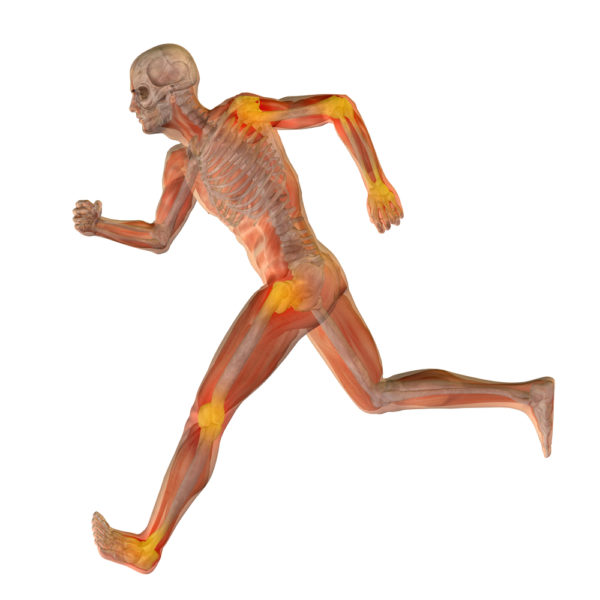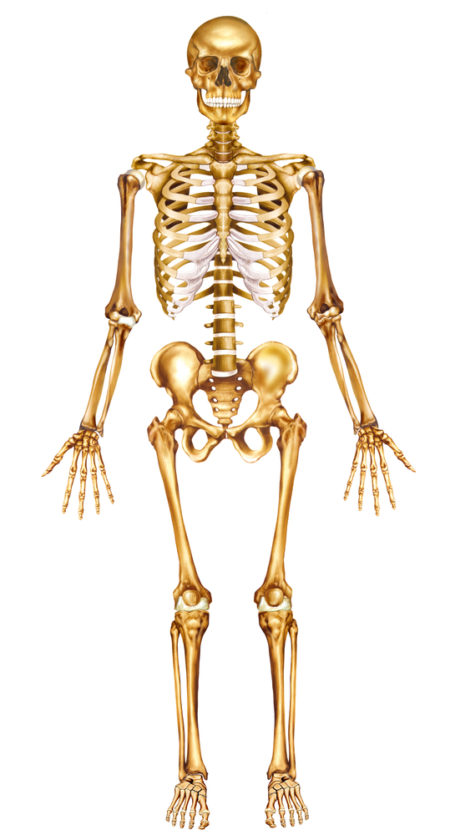Anatomical names for body parts
Anatomy names reveal place, shape and direction of use for that body part. In anatomy class you will see many pictures of bones and muscles with labels. You will handle models of body parts that mysteriously fit together like a puzzle. You will hear lectures about how the body parts function.
But, the real key to learning anatomy is to understand anatomical names in terms of the movement they control. Think of the body moving in three dimensions. Anatomic charts are static. The body parts and models in anatomy laboratory are fixed. Yet, human anatomic names describe their size, shape, placement and direction of movement.
Anatomical locations
Where does this body part fit? Directional terminology for anatomical location often gives students problems right from the beginning. Is the disassembled bone from the right side or left side of the skeleton? Am I viewing this arm from the front or the back?
Even whether an arm is a right or left one can be puzzling. Do not feel bad if you have trouble with the right and left designation. Even hospitals must go to great lengths to make sure a surgeon does not get mixed up between right and left appendages.
We all think of right and left in terms of our own right and left. Our brains have unconscious memory traces for automatic actions that are hard to overcome when we try to think of the movements of another person. It takes a conscious effort to reverse right and left for a person we are facing.
Human anatomical position
Mapping out anatomical direction of body parts can be very frustrating. If you become exasperated by sorting out the terms medial, lateral, caudal and distal, think of them in terms of a map. If you want to plan a route from New York City to San Francisco, first you must know which city is your starting point. You also need to have the concept of north, south, east and west under control to get where you want to go.
Anatomy is much the same way in that you need a fixed starting point—not an obvious thing with a body as lanky and flexible as that of a human. The starting point you must learn first is the human ‘anatomical position’. All body parts and connections are named relative to a standing person facing the observer with arms out from his/her side and palms of the hands facing the observer.
Remember always that the ‘right’ and ‘left’ of a person in the anatomical position are opposite your own right and left. For your right and left side to match that of someone else, you must have your back to them.
In order to map the movement of a body away from the anatomical position, you need directional terms. Because road maps are flat representations of Earth’s static surface four directions suffice. To map body movement away from the anatomical position in three dimensions, more than 4 directional words are needed.
It is critical to your success in anatomy to study human body directional terms until they are second nature to you. Many students pass over this early part of the course because it seems boring. Yet, directional terms will appear repeatedly as you proceed with learning the names and locations of body parts. You need to work on the directional concepts used in anatomy until your brain becomes programmed to think of anatomy in that language.
Translating anatomical names
Anatomical names are descriptions. Anatomic names were decided long ago when scientists worked in the Latin language. But Latin can be translated into your own language with the help of Google. Once translated you will see that anatomical names make sense. Click here to find Google translations.
You will also notice that anatomical names appear in layers. For example, muscle names reflect the names of the bone they are connected to. The blood vessels and nerves run together in bundles and reflect the name of the muscle they course through. Even if your exams are not cumulative, if you make your learning cumulative as you proceed through your anatomy and physiology course you will find it much easier. And, your exam grades will be much higher.
Further Reading:
Study Anatomy & Physiology for Maximum Learning
Best Way to Learn Anatomy and Physiology
Do you want to know more about the role movement plays in naming anatomical parts? Please put your questions in the comment box or send me an email at DrReece@MedicalScienceNavigator.com. I read and reply to all comments and email.
If you think this description of mapping out the location of human body parts is helpful, share it with your fellow students or send it to your favorite social media by clicking one of the buttons below.
Margaret Thompson Reece PhD, physiologist, former Senior Scientist and Laboratory Director at academic medical centers in California, New York and Massachusetts is now Manager at Reece Biomedical Consulting LLC.
She taught physiology for over 30 years to undergraduate and graduate students, at two- and four-year colleges, in the classroom and in the research laboratory. Her books “Physiology: Custom-Designed Chemistry”, “Inside the Closed World of the Brain”, and her online course “30-Day Challenge: Craft Your Plan for Learning Physiology”, and “Busy Student’s Anatomy & Physiology Study Journal” are created for those planning a career in healthcare. More about her books is available at https://www.amazon.com/author/margaretreece. You may contact Dr. Reece at DrReece@MedicalScienceNavigator.com, or on LinkedIn.
Dr. Reece offers a free 30 minute “how-to-get-started” phone conference to students struggling with human anatomy and physiology. Schedule an appointment by email at DrReece@MedicalScienceNavigator.com.



